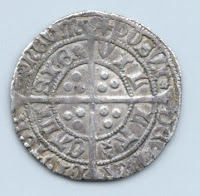In early times any object that everyone accepted as valuable could serve as money. The Romans, for example, paid their soldiers with what was then a prized commodity, salt. From this custom we get the phrase, "worth ore's salt." Other items that have been used as money include shells, tobacco, feathers, and whale teeth.
Probably the first money made specifically as a medium of exchange appeared in China during the Shang dynasty. Because farmers often had traded spades and knives for other goods, this ancient money was shaped like spades.
 |
| coin |
Increasingly, rare metals, especially gold and silver, came to be used as money. They were fashioned into coins, which could be carried easily. Governments jealously guarded the right to make coins and to establish their value. Often, however, government officials would clip pieces off coins. Then they would melt these down to make more coins so that they could buy more. During the 1500's this process brought on inflation and was stopped only when milled, or grooved, edges were put on coins. This enabled people to see at once if the coins had been clipped.
About this time, too, paper money became more common. The Chinese, the first to use both paper and movable type, were also the first to use paper money, about the year 1060
A. D. Paper money was even more convenient than coins and became especially useful as long-distance trade grew increasingly important.
